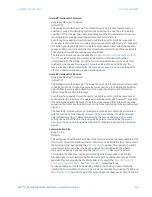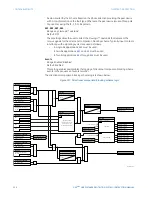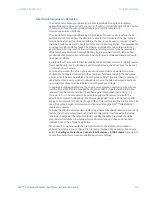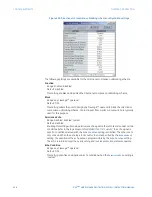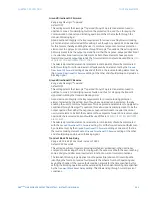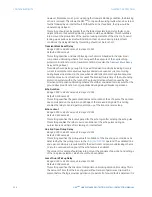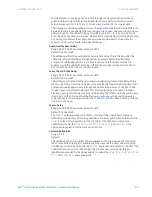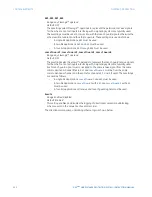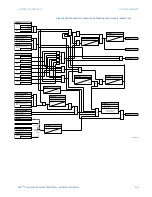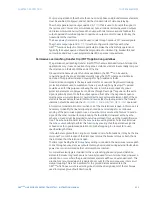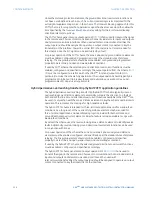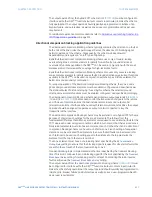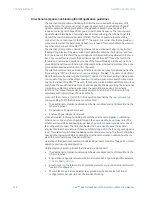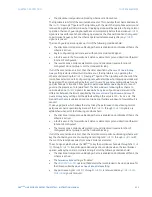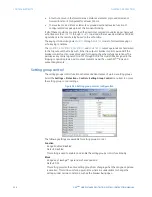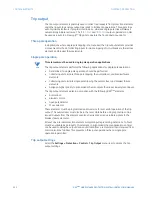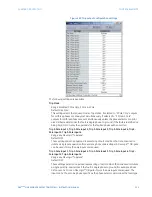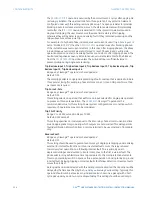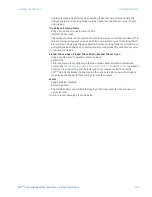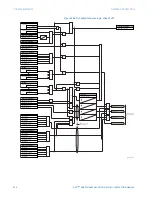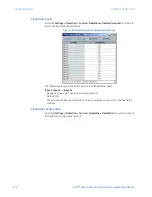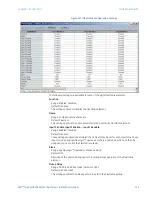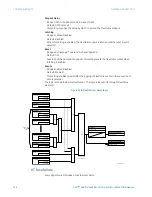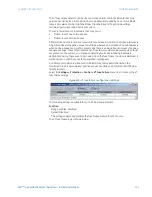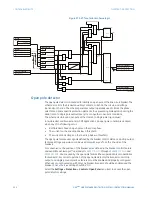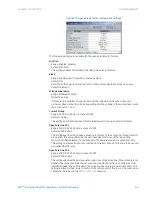
CHAPTER 7: PROTECTION
CONTROL ELEMENTS
D90
PLUS
LINE DISTANCE PROTECTION SYSTEM – INSTRUCTION MANUAL
319
•
The directional comparison unblocking scheme is not locked out.
The trip table is run if all of these conditions are met. This operates the scheme and asserts
the
DCUB OP
FlexLogic™ operand. The trip table, with the aid of the local phase selector and
received RX signals, will determine what tripping operands will be operated. During normal
operation, the loss-of-guard signal will be seen momentarily before the permissive
DCUB RX
signal is received for each channel being operated, as the channel transitions from guard
to permissive frequency, but the scheme operates instantaneously after any
DCUB RX
signal is received.
The loss-of-guard operation picks up if all of the following conditions hold:
•
The directional comparison unblocking scheme is enabled and not blocked (that is, the
scheme is active).
•
Any loss-of-guard signal is received without its associated RX signal.
•
A fault is seen in the forward zone 2 distance elements or ground directional forward
function (if configured).
•
The reverse zone 4 distance elements or ground directional reverse function (if
configured) did not pickup to set the transient blocking.
If all of these conditions are met, then the timer specified by the
Loss Of Guard Pickup
Delay
setting is started. After this timer times out, the trip table is run, operating the
scheme and asserting the
DCUB OP
FlexLogic™ operand. The trip table, with the aid of the
local phase selector and loss-of-guard signals, will determine what tripping operands will
be operated. The timer specified by the
Loss Of Guard Pickup Delay
setting allows for any
and all channels to transition from guard to permissive before operating due to loss-of-
guard in the presence of a forward fault. The time window of allowing the scheme to
operate when no
DCUB RX
signal is received when any loss-of-guard was received is the
difference between the timers specified by the
Loss of Guard Trip Window
and
Loss Of
Guard Pickup Delay
settings. For the default settings, this value is 150 – 8 = 142 ms. This
means the scheme is unblocked and can trip during this time window if a forward fault is
sensed.
The keying signals, which allows the relay to key the permissive channel during normal
permissive scheme operation by means of the
DCUB TX1
through
DCUB TX4
signals, are
established when all of the following conditions hold.
•
The directional comparison unblocking scheme is enabled and not blocked (that is, the
scheme is active).
•
A fault is seen in the forward zone 2 distance elements or ground directional forward
function (if configured).
•
The reverse zone 4 distance elements or ground directional reverse function (if
configured) did not pickup to set the transient blocking.
If all of these conditions are met, then the directional comparison unblocking scheme will
key the channels by means of asserting transmit signals
DCUB TX1
through
DCUB TX4
with
the aid of the local phase selector or zone 2 distance elements.
The echo signal, which allows the D90
Plus
to key the permissive channels through the
DCUB
TX1
through
DCUB TX4
transmit operands during echo conditions when the local breaker
opened, will key the carrier or carriers during if all of the following conditions hold.
•
The directional comparison unblocking scheme is enabled and not blocked (that is, the
scheme is active).
•
The
Permissive Echo
setting is “Enabled”.
•
The
LINE PICKUP LEO PKP
operand that detects the local breaker to be open picks up for
the time specified by
Line End Open Pickup Delay
setting.
•
Any permissive signal
DCUB RX1
through
DCUB RX4
is received and any
DCUB LOG1
to
DCUB LOG4
signal is received.

